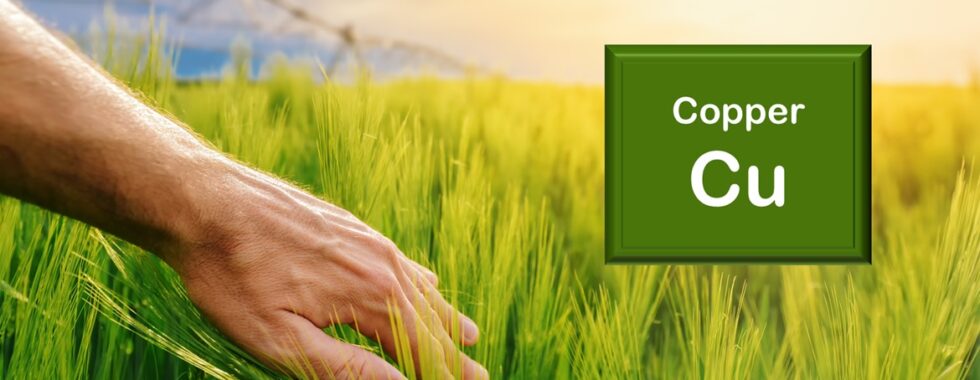Copper in plants
Copper is an essential plant nutrient, classified as a micronutrient.
It has a role in various important processes in plants. For example:
- Copper is a structural element in numerous proteins
- Essential for the photosynthesis process – plastocyanin is a copper protein that acts as an electron carrier in the electron transport chain of photosynthesis.
- Essential for the respiration process
- Activates several enzymes
- Participates in cell wall metabolism
COPPER AVAILABILITY IN SOIL AND UPTAKE BY PLANTS
Copper exists in soils as Cu2+ and most of the copper is absorbed by the plant as Cu2+. Once absorbed, it accumulates mainly in the roots. Its concentration in plant tissue ranges from 5 to 20 ppm and in soil from 2 to 100 ppm (mg kg-). However, most of the copper in the soil is not available for plants.
Availability of copper increases in soil pH below 7.0 and decreases at a higher pH, due to fixation to soil clay minerals. Copper tends to easily bind to organic matter. Therefore, soil organic matter reduces copper availability to plants and despite their low pH, copper deficiency might occur on acidic soils if the organic matter content of the soil is high.
Copper can also be adsorbed to iron and manganese oxides and precipitate with carbonate and phosphate minerals. These reactions reduce copper availability to plants.
COPPER DEFICIENCY SYMPTOMS IN PLANTS
Copper is an immobile nutrient and, therefore, deficiency symptoms appear on the tips of young leaves first. Symptoms then extend to leaf margins.
Symptoms vary between different crops and may include:
- Twisted young leaves
- Young leaves may become bluish-green
- Chlorosis between the veins of young leaves
- Compact appearance of the entire plant
- Dropping of mature leaves
- Delayed flowering
- Wilting
COPPER TOXICITY IN PLANTS
Although copper is an essential micronutrient, excess of copper might be toxic to plants. It might inhibit plant growth by causing an oxidative damage to cells and interfering with the photosynthesis process. When in excess, copper may also replace the magnesium (Mg2+) in the chlorophyll molecule and impair the photosynthesis process.
In addition to the direct toxicity, excess of copper may also cause antagonistic interactions with other nutrients. Therefore, excess of copper may result in deficiency of nutrients such as molybdenum, iron, manganese and zinc.
Copper toxicity in plants depends mainly on plant specie and soil conditions. Copper toxicity in alkaline soils is less likely to occur than in acidic soils.
Toxicity symptoms may include:
- Interveinal chlorosis
- Necrosis
- Stunting
- Inhibited root growth
- Inhibited shoot growth







